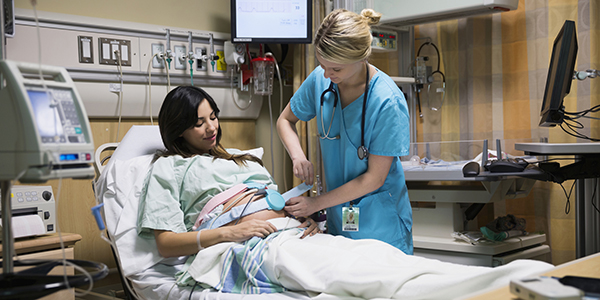
Fetal monitoring is by and large done electronically in birthing facilities. Electronic Fetal Monitors are used to detect and trace the fetal heart rate and uterine contractions. These are usually monitored at the same time however, each one can be obtained separately. In terms of electronic fetal monitoring, it is either external or internal.
Fetal monitoring is a valuable tool for measuring fetal well being and assessing labor progress. Due to the sensitivity of the monitor, it may indicate a contraction is diminishing even before you notice the pain subsiding. This information can be a very useful energy saving tool and source of encouragement for you and your partner. Continuous electronic fetal monitoring does limit your mobility regarding walking around, however, if you are able, sitting up in a chair or on the side of the bed with your legs supported are options to staying confined to the bed.









